Ficus: what is, types and care at home

Ficus is a plant species native to the tropics around the world. It is incredibly diverse and some species are used as houseplants. To evaluate the decorative possibilities of such an indoor flower, you need to learn more about its subspecies and care requirements.
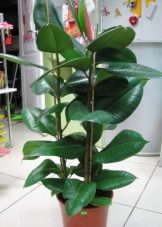
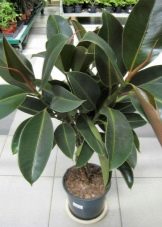
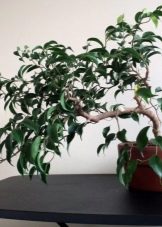
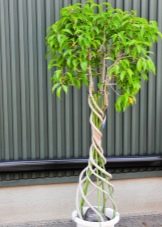
What it is?
Since this genus is very diverse, it is difficult to make a specific classification or description. Ficus can be a shrub, vine, or just a small ornamental plant. Many subspecies produce aerial roots, while others produce delicious fruits such as figs. The sacred fig is of particular importance to followers of some Asian religions, including Buddhism.
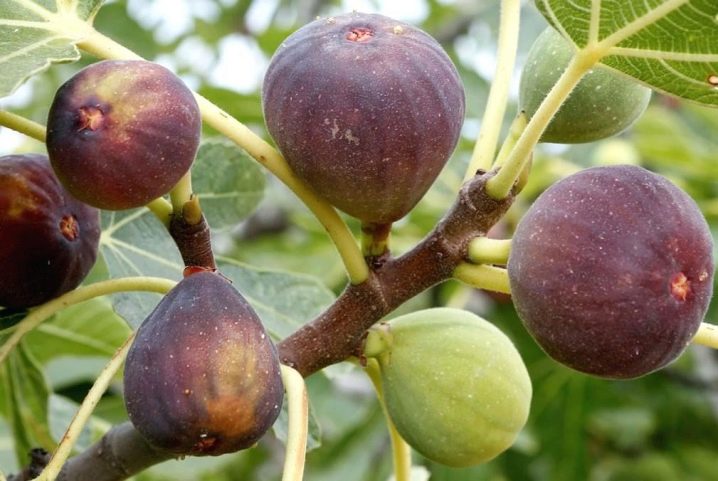
Ficus is the largest genus in the mulberry family and is one of the largest flowering plants currently described. All species were originally divided into several genera in the mid-1800s, providing the basis for a subgeneric classification. This traditional classification has been challenged by recent phylogenetic studies.
Ficus loves a lot of bright ambient light and is very susceptible to root rot. It is planted in a pot with gravel or rock drainage, but not expanded clay, since it negatively affects the quality of the soil.
These plants love to be watered, but do not tolerate waterlogging, they prefer the soil to dry well from watering to watering.
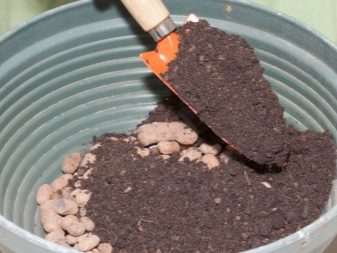
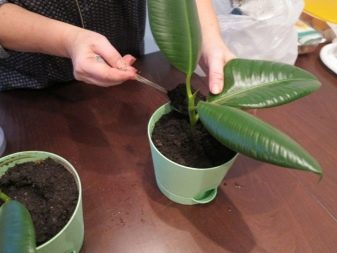
In general, the genus of ficus has more than 800 species. Each reproduces quickly and easily, which makes it a popular tree for tropical rainforest restoration, and a decorative pet in homes, offices, institutions. Studies have shown that ficus trees play an important role in environmental restoration, as they are highly effective in supporting the regeneration of surrounding plant communities.
Ficuses thrive in large pots and without pruning. Under favorable conditions, they can reach a height of two meters. The less space and the worse the maintenance, the smaller in size and width the tree will grow. Not all varieties can bloom, but if they allow you to enjoy such a spectacle, then at the same time they will also delight you with a pleasant aroma.


To maintain massive trunks and branches of ficus trees in their natural environment, huge and powerful root systems are required, and nature has provided for this.
The roots of the described plant type spread laterally and often need proper care.
Poisonous or not?
Ficus is poisonous to animals and humans. Many plants, including elastica, produce milky sap, especially after pruning on stems and leaves. It is he who can cause not only irritation on the skin, but also gastrointestinal problems if absorbed through the skin or enters the mouth of a person and an animal. Poisoning symptoms include oral irritation, vomiting, diarrhea, and skin redness.
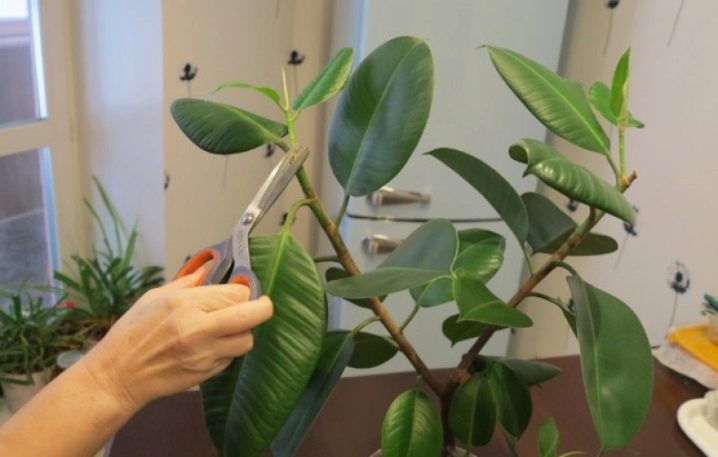
Views
Ficus can be ordinary or bush. There are several main types, let's consider them in more detail.
- Pumila. In its natural environment, it is found in East Asia. The plant is 4.5 meters long and 1.8 meters wide. The creeping species has heart-shaped green leaves. Outdoors, the plant can produce "hairy" fruits that are green at first and then purple when ripe. Such a flower needs regular watering.Thrips and mealy bugs are a major problem as they feed on foliage. Gardeners often plant this species in a container or hanging basket.
At the same time, the ficus perfectly climbs trellises, pillars and walls.
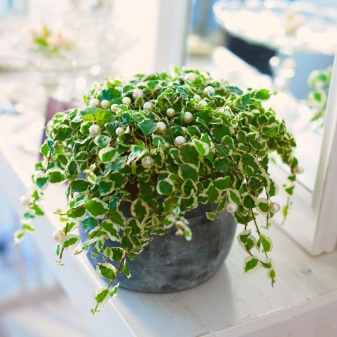

- Ficus Benjamina. It is an evergreen broadleaf representative of the genus from Southeast Asia, which reaches 15 meters in height and 9 meters in width. The plant has light brown bark, green leaves and arched twigs. Outdoors, it can produce small, round fruits. Withstands the content in conditions of cold weather up to 10-12 degrees, sometimes it loses leaves in winter. Gardeners mainly use this ficus plant as a houseplant.

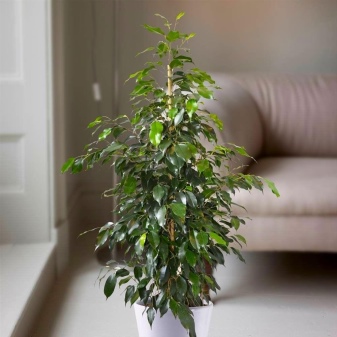
- Ficus petiolaris. It is sometimes called stone ficus. Grows well in containers, used as a bonsai. This species has light green leaves and green flowers that are inferior in appearance to other varieties of ficus.

- Elastica. This broadleaf evergreen grows up to 30 meters high and 50 meters wide. Such huge plants have thick, dark green leaves, purple or pink stipules, and small fruits. This ficus variety needs indirect lighting or partial shade. Sometimes it suffers from aphids and scales.
As a culture, the flower is smaller and grows well at home.

- Ficus religiosa. This species has light gray bark, dark green leaves and purple fruits. It is a sacred tree for those who follow Hinduism and Buddhism, and it does not have serious problems with diseases or pests. Grows best in the sun. Gardeners often use the tree as a container plant.


- Carica. Mature trees have a silvery gray bark, which arouses decorative interest in the species described. Leaves with dark green tops and pale green undersides. Inconspicuous green flowers bloom in spring, followed by edible fruits that ripen in late summer. Of the diseases, stains on the leaves, rot are most often found. The variety grows well in containers.
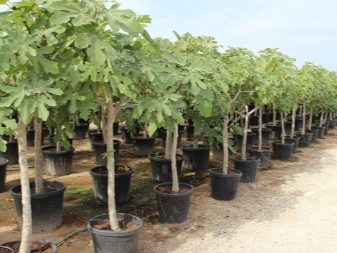
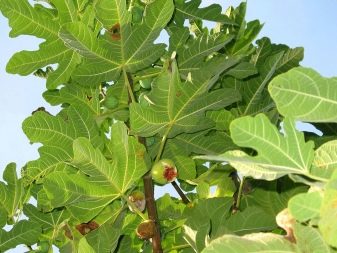
- Ficus albert-smithii. It is a species in the family Moraceae. In its natural environment, it grows in Brazil, Colombia, Guyana, Peru and Venezuela. It has large, wide leaves.
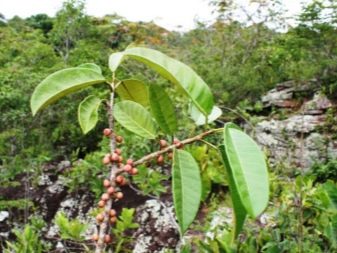

- Altissima. Ficus altissima is a type of flowering plant in the Mora family. It is a large, majestic evergreen tree native to Southeast Asia.
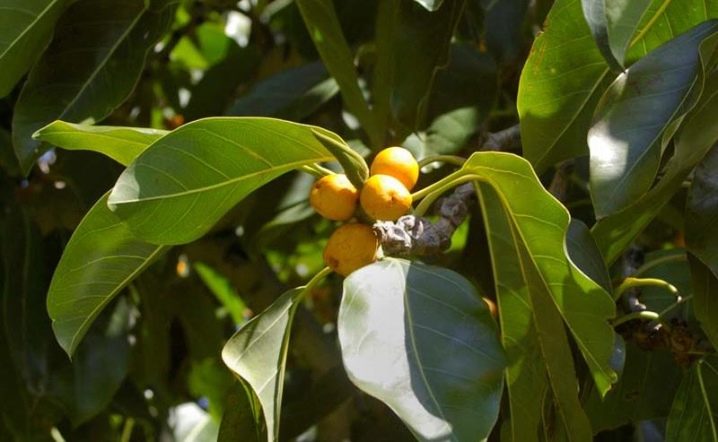
- Ficus americana. Commonly known as West Indian Bay or Jamaican Cherry Fig. It grows in the Caribbean, Mexico, Central and South America.

- Ficus aurea. Another famous cultivar that is native to the American state of Florida, the North and West Caribbean, South Mexico and Central America south of Panama.

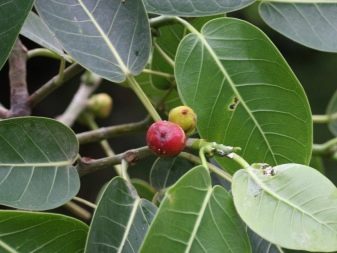
- Ficus auriculata Lour. A type of ficus native to Asia. Of the characteristic features, large and round leaves can be distinguished. Used as feed in Nepal.
It is the least resistant to direct sunlight, although it loves a lot of light.
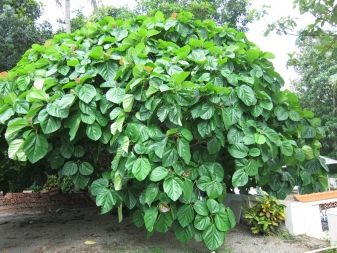
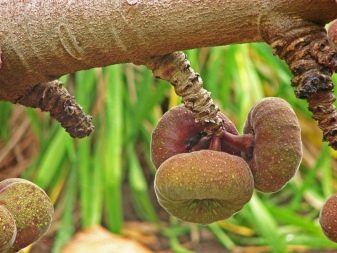
- Florida Spire. New, green variety with a narrow trunk.
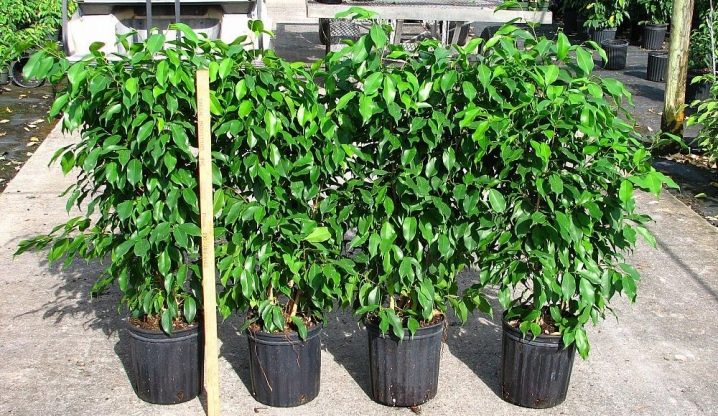
- "Golden Princess". It has grayish-green leaves bordered with ivory. It is one of the first variegated varieties to be grown in nurseries.
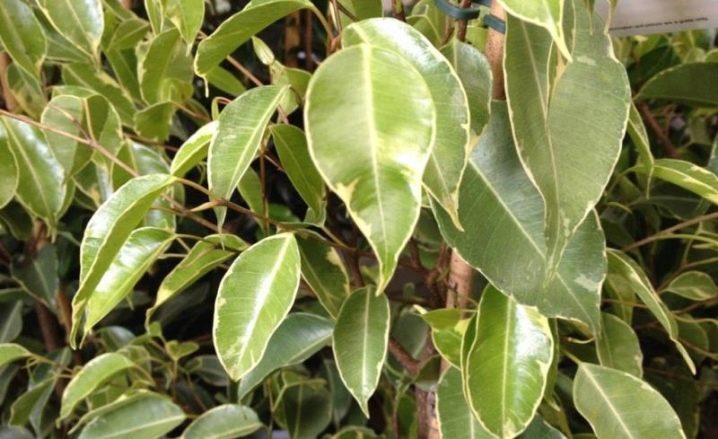
- Jacqueline. It has a very colorful foliage with a grayish-green center and border.

- Decora. Shows off broad elliptical leaves.
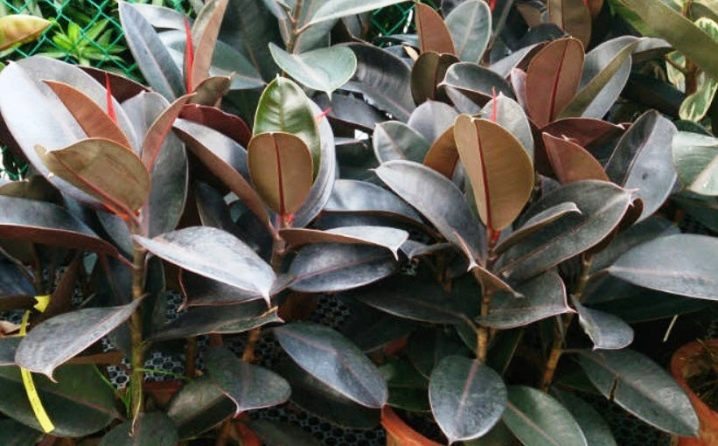
- Doscheri. It has a narrow leaf shape and a bright variegated pattern, green, grayish-green, yellow, white and pink petiole.
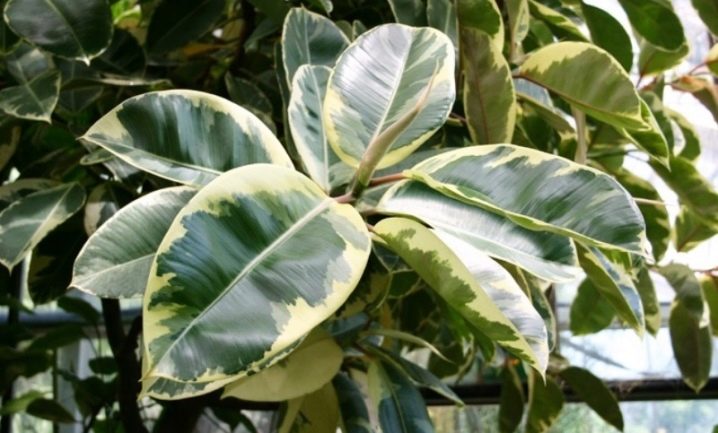
- Rubra. Differs in dark leaves with a wine tint. Most of the red color is lost as the plant receives less light.

Home care
Any of the ficuses loves to be looked after in the apartment, namely: they wipe the leaves from dust, produce high-quality and timely watering, do not put in a draft. If we talk briefly about the requirements for care, then it is worth adhering to the following indicators:
- temperature - 15-24 ° C, lowering cannot be allowed, otherwise the ficus will simply die;
- the light should be bright, but diffused, in winter you can use special lamps;
- watering must be ensured moderate, regular, if the water supply is excessive, the root system will suffer;
- stick to a humidity level of 60% or more.

If we consider the requirements for quality care in more detail, then it is always worth remembering that this houseplant belongs to those that do not tolerate cold temperatures. The minimum allowable level is at around 15 degrees.
If there is not enough light, then the ficus will begin to suffer, and if there is a lot, then the branches will become lanky, it will be difficult to restrain the crown.
It is best to put it on the window, but at the same time hang out a thin tulle through which the sun's rays are scattered, and not directly on the foliage.

Ficuses feel great in the interior of a room with good humidity. If in summer this is not a problem, then in winter it is not so easy to achieve the required indicator. During this period, they often use special humidifiers or simply place containers with water next to them so that it can evaporate freely. There is another trick - use a spray bottle and delight the leaves with a pleasant shower from time to time.
As for watering, it must be regular. Soft water at room temperature would be ideal for ficus. But you cannot water or spray water every day, this will lead to the occurrence of a fungal disease - as a rule, root rot. If the temperature in the room decreases in winter, then the frequency of watering is reduced. The main condition is for the soil to dry well, you can check this not only with the help of a moisture meter, but also simply by immersing your finger in the ground. If it is dry at a distance of three centimeters, then you can already moisturize.
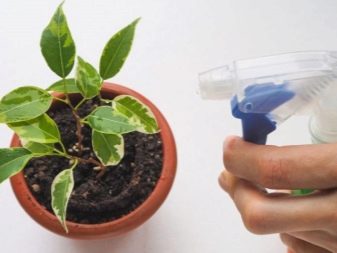
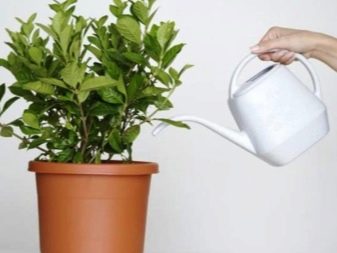
Caring for a plant is not only compliance with the conditions of maintenance, but also the timely application of fertilizers. Organic, mineral and liquid complexes can be used as top dressing. It is recommended to fertilize twice a month in spring and summer.
In winter and autumn, you can use them monthly, while the dose should be four times less than that indicated on the package.
You can't do without top dressing, and this applies to any indoor plants.that grow in drainage pots as the water quickly flushes nutrients out of the soil. It is best to use a granular fertilizer with a ratio of nitrogen, phosphorus and potassium of 3: 1: 2. A balanced top dressing, for example, a water-soluble fertilizer with a formula of 10: 10: 10, is also good.
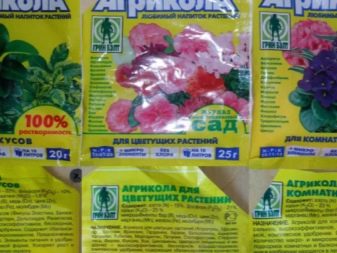
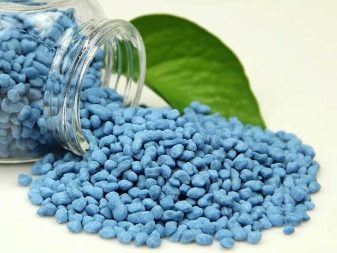
Very often, from the foliage, you can understand that the tree is feeling bad. Particular attention should be paid if a suspicious bloom appears, the foliage turns yellow or becomes stained. Sometimes this indicates poor care, and sometimes this is the first sign of illness or insect damage.
It also happens that yellow, old leaves have appeared, and new ones are too small, in this case the tree does not have enough nutrients. The abundance of water may have caused a similar condition as well. The negative influence of sunlight leads to burns and yellowing, but the appearance of brown spots is often associated with the high temperature inside the room. Any of the reasons should be dealt with and the symptoms should be studied more thoroughly.
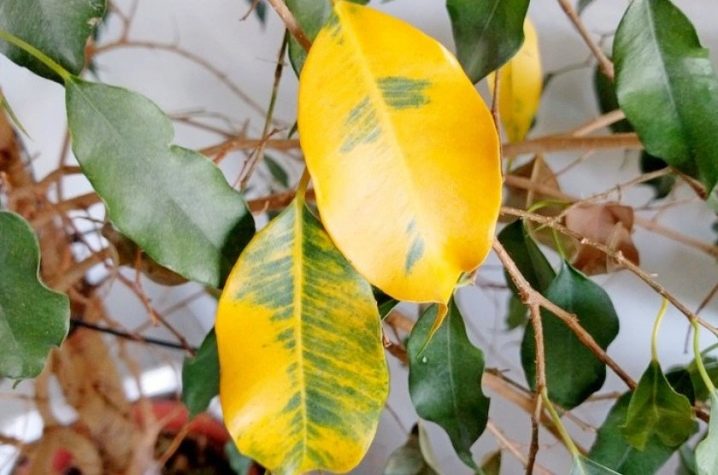
Regular pruning helps to improve branch formation and create a more attractive crown. The main thing to remember about pruning ficus is that the procedure is carried out only when the plant is at rest, namely in the winter season. Most gardeners have not even thought about how important it is to properly prune, since many find it difficult and not entirely necessary. When carrying out the procedure, you must first of all pay attention to the tiny branches with a node between them.
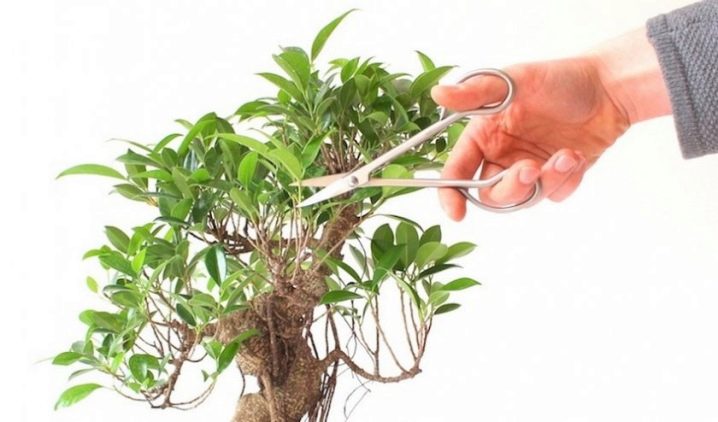
If you accidentally cut a piece between these nodes, the branch dies. With proper pruning, the plant will lose a little foliage, but it will immediately begin to germinate and become lush.
When pruning is done correctly, the life of the ficus can be extended. It helps:
- control or maintain shape and size;
- promote growth;
- light and air to penetrate to the lower parts;
- remove dead, diseased or pest-infested leaves and shoots.
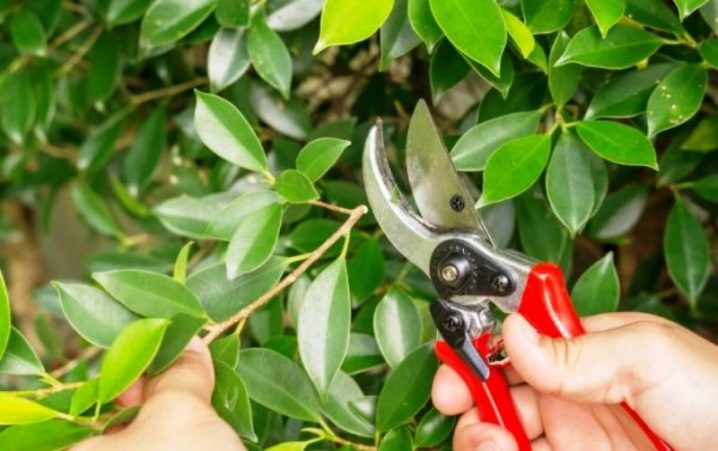
Start by removing all dead branches from the tree. Since some of the small inner branches are shaded, they die, and this is a natural process in such light-loving plants. These twigs are usually very small, about the size of a pencil. They do not bring any benefit, they only pull energy towards themselves, therefore they remove any weak specimens in the center of the plant.
After that, it's time to trim the outer crown. Cut off about a third of the canopy around the tree. Reducing its size encourages new growth. Sometimes branches are obtained that change the shape of the tree. They are removed selectively, moving back to the center.
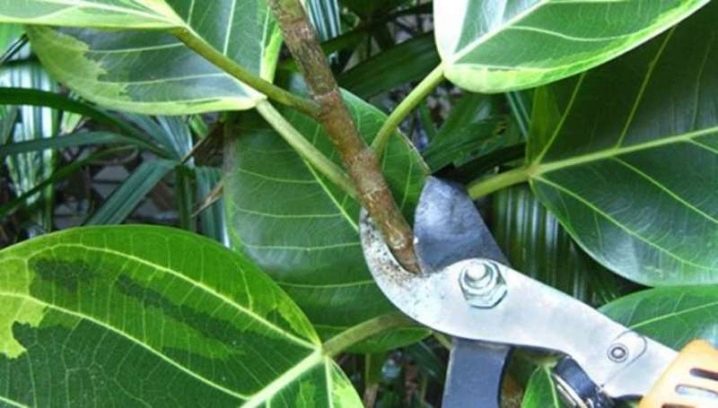
Root pruning is performed even if they are damaged and there is a suspicion that the plant may die in the future.
Basics of the procedure:
- always cut back to a healthy branch;
- always make an even cut, never pluck a branch, since such damage greatly injures the plant, makes its immunity weakened;
- never cut too far above the bud as this leads to further rotting;
- it must be remembered that the tips (terminal bud) of a branch or stem grow much stronger than the lower buds (lateral).
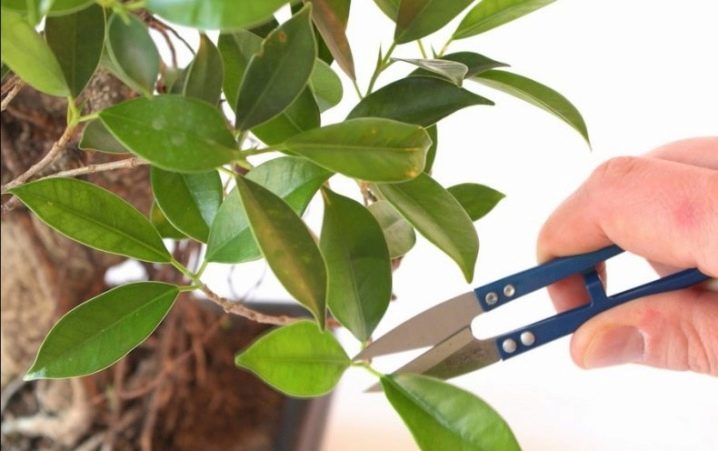
Leaf fall signals the onset of a state of rest. The soil should remain moist, but not soggy. The optimal time for pruning trees is at the end of winter, but if all the leaves suddenly crumbled, the plant breeder may need to urgently intervene. First of all, they try to eliminate the conditions that caused such a reaction, only after that you can start cutting branches from one quarter to one third of their length. Leave one central shoot.
You can understand that the plant has no problems by coloring the foliage. If the young leaves are light green and the old ones are darker, the tree is healthy. Sometimes the color is less intense, this is due to the fact that the ficus has recently been moved from a bright place to a less sunlit place. Leaf discoloration is not a problem as long as they do not turn yellow or fall off the tree. However, you can always install an artificial light source.
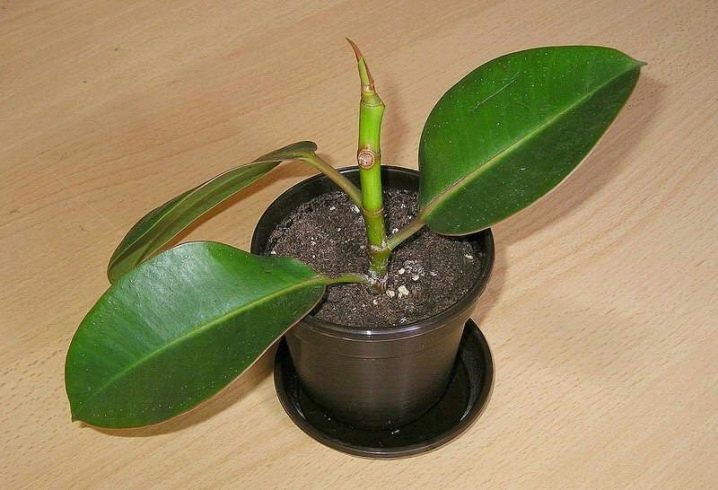
If leaves of different ages and sizes begin to turn light green, then this indicates that the plant is oversaturated with moisture. Instead of following a previously set watering schedule, it is worth checking the soil and letting it dry for a week. The same happens with insufficient nutrition, when all the necessary minerals are washed out of the soil.
Transfer
A transplant is also one of the forms of ficus care, but it is worth talking about in more detail. This indoor flower does not like to change position, so it is better to touch it only as a last resort. A transplant is beneficial only when done correctly.
Sometimes the transplant is not associated with soil depletion or any disease, it's just that the root system has grown a lot, and it's time to place the flower in a larger container. Every experienced grower checks the roots of the ficus tree to make sure it's time to replant it.
If the pot looks overcrowded and there is little room for soil, it's time to move your pet to a more comfortable environment.
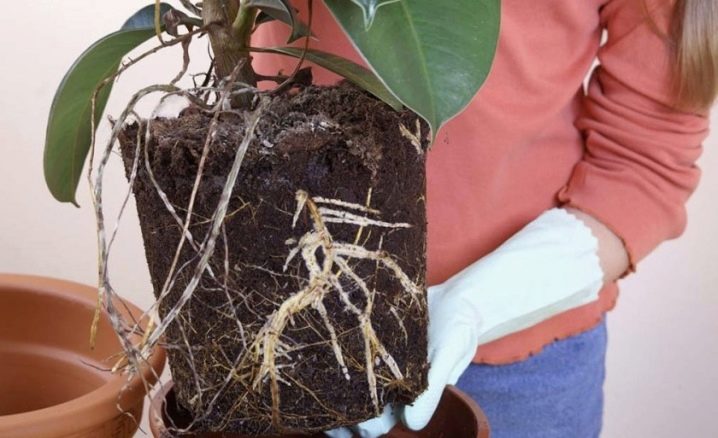
There is nothing complicated in the procedure, you must first carefully remove the plant from the container. The root ball is cleaned of excess soil, and at the same time it is examined for diseases and other damage. It is advisable to rinse well from the soil in order to better see where the roots have already disappeared. These are subject to immediate removal, each cut is sprinkled with crushed activated carbon powder to prevent infection.
At the next stage, a new pot for ficus is chosen; it should not be a few centimeters larger in volume than the previous one. It is filled with several centimeters of fresh soil, drainage must be laid on the bottom, and you should not use expanded clay.After planting, the root ball should be at least two centimeters below the rim of the container, so it is best to adjust the bottom level first. Fill the space around the root ball with fresh soil.
After planting, they do not tamp it so that the ficus does not suffocate, they just make high-quality watering and wait for the excess moisture to drain.
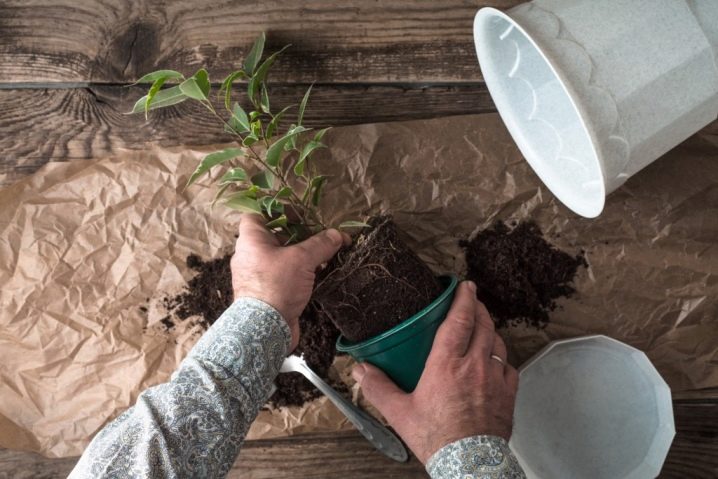
If the pot is not changed, then the plant will not grow. When you want the ficus to please in size and take up as much space as possible, then it is better to regularly monitor that the root system has a place to develop. It is enough just to remove the flower from the pot, cut the horse system, replace the soil and install it in the previous container. Any tool used for trimming needs to be well disinfected. Separate tangled roots with your fingers, unwinding any that have begun to circle around the root ball. Those that are dead or rotten are also pruned. Remove about one third of the previous length using small scissors and pruning shears.
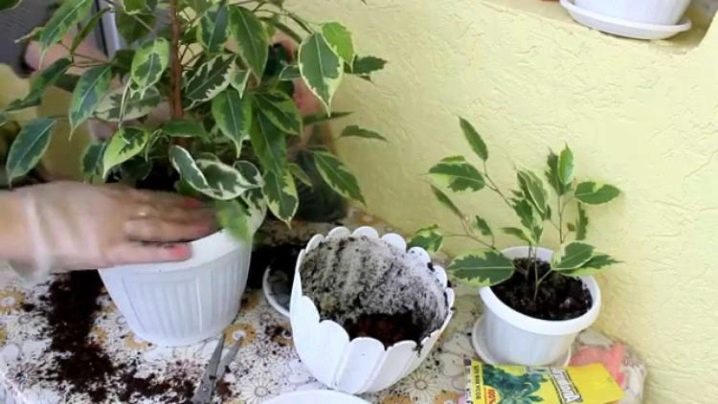
It is possible to determine that the root system no longer fits in the container even when the drainage holes become closed by it. Do not worry if, after transplanting, the plant begins to throw off the leaves, this is how the ficus reacts to stress, and will soon grow new shoots again.
Some species are not too fond of spacious pots, so the container should move no more than two centimeters from the roots.
Do not replant the tree outdoors during hot weather. This can lead to wilting. There are no special requirements for the soil, except that it must be sterile. It is imperative to organize high-quality drainage, it is very easy to check it. If, after watering, the water is absorbed into the soil within 12 hours, the drainage level is OK, when it stays for 24 hours, something is wrong.
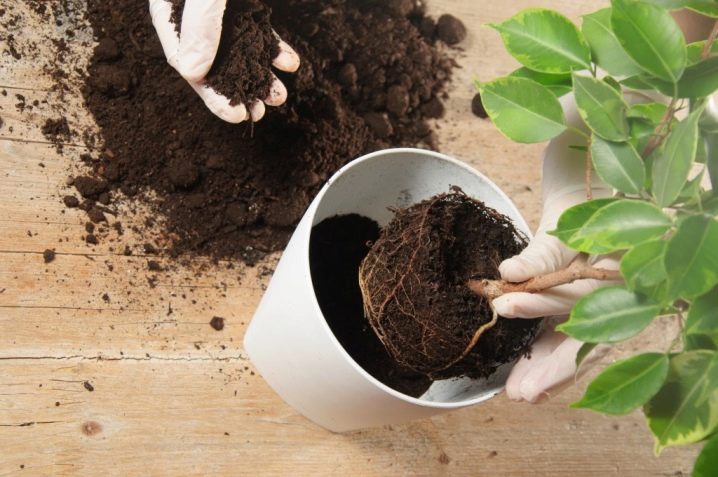
Reproduction methods
There are several ways to propagate ficus at home, let's dwell on them in more detail.
Apical cutting
In this case, you need a piece of the stem (often a growing tip), it should be about 10-15 cm in length. Remove all the leaves, if the juice oozes, wait for it to stop, usually for 30 minutes, and then rinse it thoroughly.
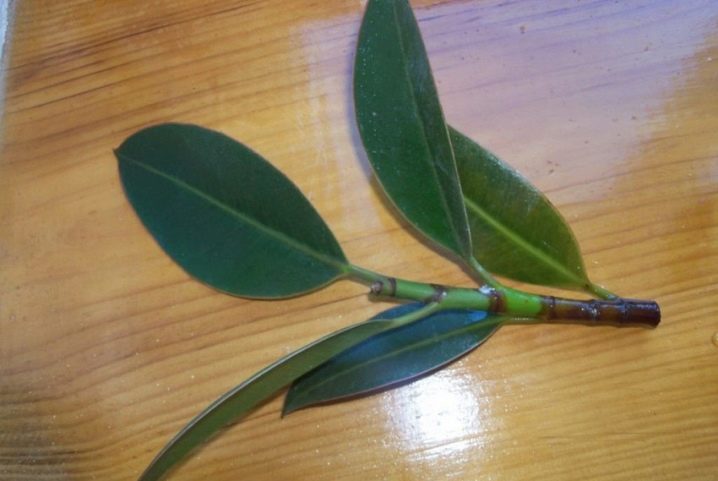
Spring and summer are ideal times for plant propagation. At this time, growth is more active, which means that the root system will form faster. A mixture of sand with peat and perlite is poured into the pot. All available cuttings are planted in the ground, covered with a plastic bottle or plastic bag to create a greenhouse effect. They strictly monitor the temperature, which should be at 25 degrees.
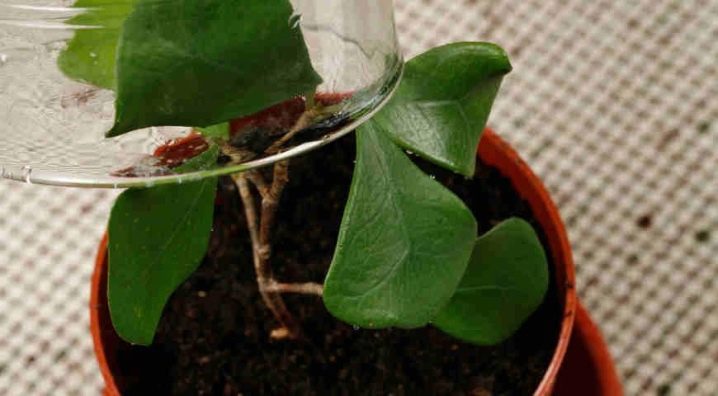
It is worth remembering that the rooting rate depends on the variety. So, green-leaved ficuses germinate faster than variegated ones. Not only the soil is suitable for the development of the root system, you can also use water, to which a growth enhancer is previously added. The first roots should appear in two weeks.
Sheet plates
This is another way how you can propagate a plant at home. True, this method is not suitable for all varieties, but it can be used with young ficuses. Spring is the best time, before winter, during such a period, the plant has time to adapt and take root.
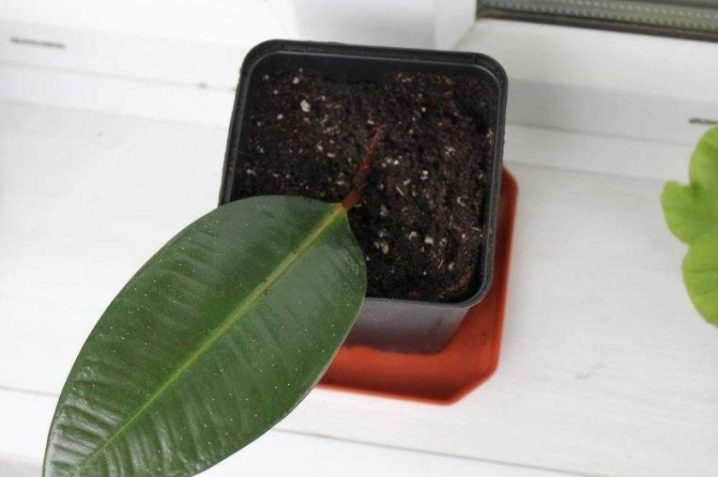
The step-by-step process is as follows.
- A leaf with an internode is cut from the stem, and not only the main, but also an additional oblique cut must be made for the rapid formation of roots.
- First, to remove unnecessary juice, the leaf is immersed in water for an hour. Thereafter, it is transferred to a stimulant fluid.
- To prevent moisture evaporation through the sheet plate, it is recommended to tie it into a tube.
- When roots appear, you can transfer the plant to the ground. Immersion in the soil is carried out up to the petiole. After that, the ground is watered, you can spray it with a spray bottle and cover with a film to create greenhouse conditions.
- If the humidity is at the level of 80%, and the temperature in the room is from 25 to 28 degrees, then in a month new shoots will begin to appear.
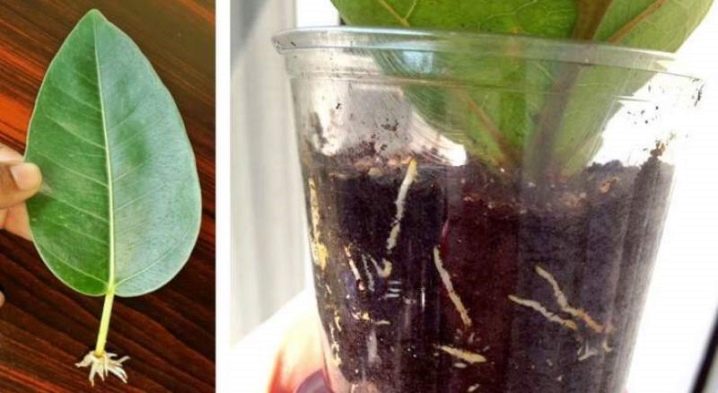
Air layering
This method is used when the trunk is severely exposed. Small cuts are made on it at a distance of three centimeters, the bark is removed. Apply "Kornevin" to this place, apply sphagnum moss, spray from a spray bottle, and cover with a film. From time to time, make sure that the moss does not dry out. When the roots break through the polyethylene, the sprout can be transplanted into a separate pot.
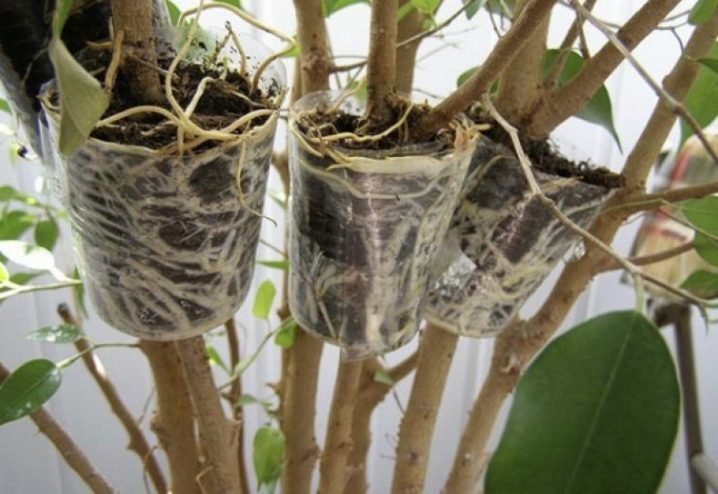
Seeds
This method is not used often, since it is not so easy to get seeds, but if you are lucky, then landing is carried out as follows.
- A mixture of sphagnum moss and peat is used as a soil. It must be constantly moist, this is the only way to germinate the seeds.
- The container is covered with a film, as soon as the first roots appear, each shoot is planted in a pot. The composition of the soil changes, for the rooting of the plant it is necessary to use a mixture of perlite, river sand and peat.
- At the time of rooting, the ficus is provided with diffused light, abundant watering in summer and a small amount of moisture in winter.
- The upper parts are pinched, leaving only a couple of internodes, which in the future will become the basis for the formation of the crown.
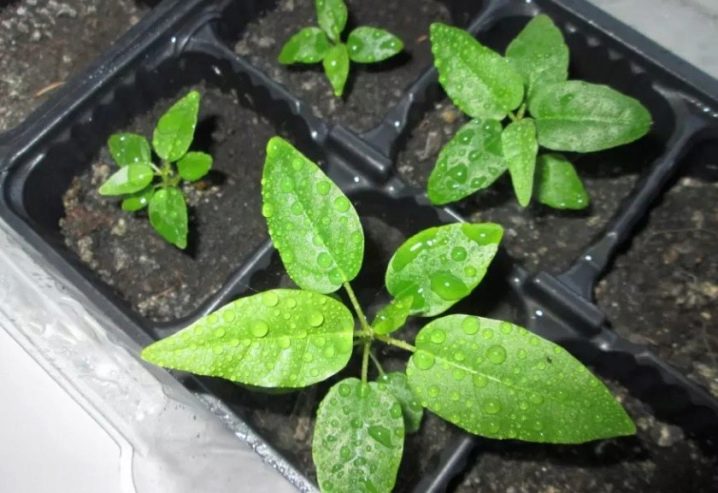
It takes about six years to grow a mature plant with a beautiful crown.
Root
This is a very effective method that is often used by plant breeders. The stalk is harvested in advance, it is cut from the common root system, all sections are treated with crushed activated carbon.
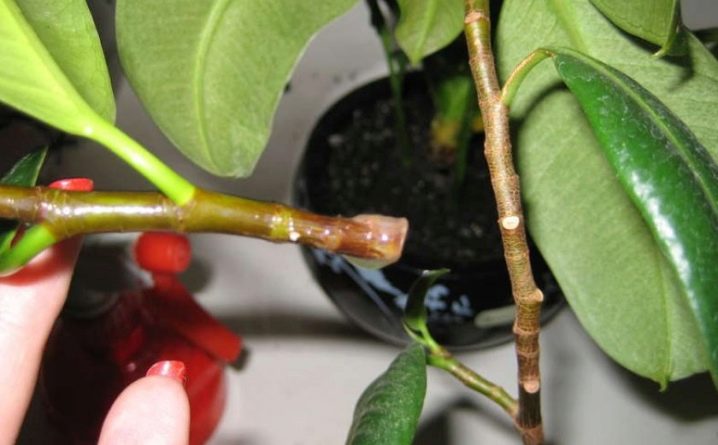
One piece can be divided into several parts, each is immersed in the ground, leaving a few centimeters on top of it, and covered with a film on top. If everything is done correctly and the soil is well moistened, then in a few months the first leaves will begin to appear. When there are four or more of them, you can remove the plastic bag, since the new plant needs to get used to the surrounding conditions.
Diseases and pests
Ficus is susceptible to several pests that suck the sap out of the plant. One of the signs of insect infestation is light green leaves, which then turn yellow, curl, and eventually fall. But insects are far from the only problem a grower has to face, there are others.

Improper care and non-compliance with the regime also negatively affect the condition of the plant. Excessive light intensity is bad for ficuses. You can identify the problem by the color of the leaves, which become light green, with the sides of the leaf blade folded up, the edge turns out to be wavy. Under normal conditions, the flower should be exposed to diffused light.
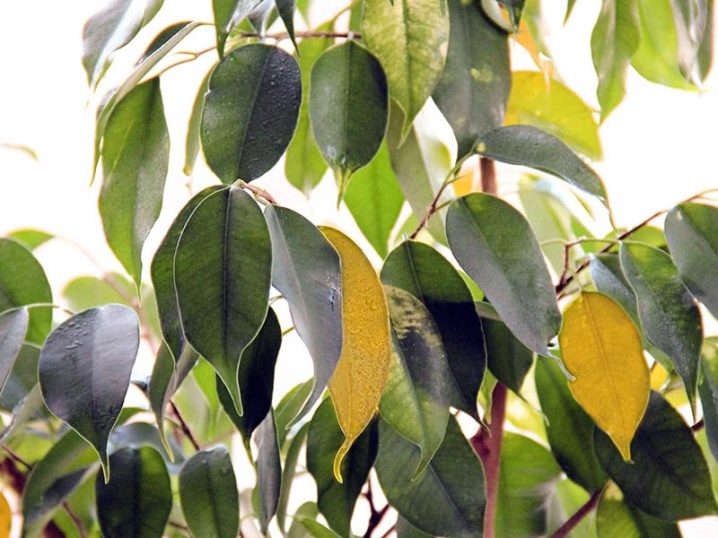
Large amounts of moisture appear as small reddish spots across and on the undersides of the leaves. The symptom is usually observed on plants that stand in the ground where there is poor drainage. As a result of the fact that the root system begins to rot, the plant ceases to receive the required amount of nutrients.
To fix the problem, you need to reduce the number of irrigations, check the drainage. The soil needs to be thoroughly dried, and in the presence of damaged roots, the ficus is better to transplant, but before that, remove all rotten parts.
In winter, when the plant is at rest, the soil is watered less frequently.
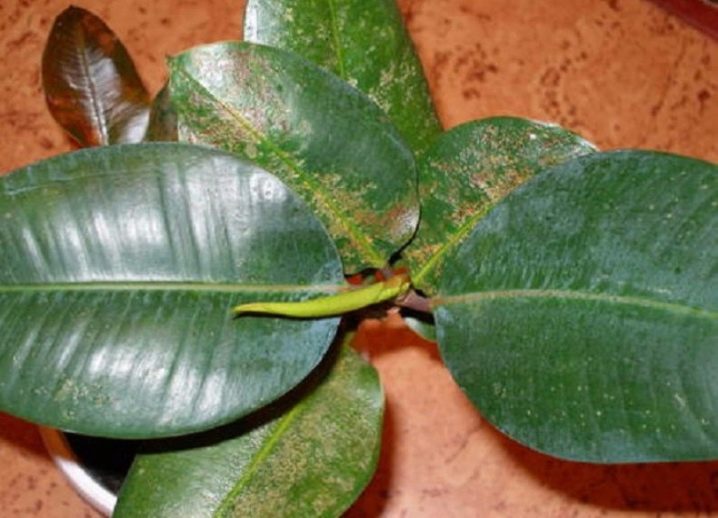
There is another problem that a plant breeder has to face - soil salinization. In this case, the flower remains undersized. You can not overdo it with fertilizers, the overabundance can be traced very simply - the foliage in the early stages is stressed and turns dark green. The root collar, being exposed to excessive salinity, dries up and dies over time. Salt build-up can in most cases be corrected by soil leaching.
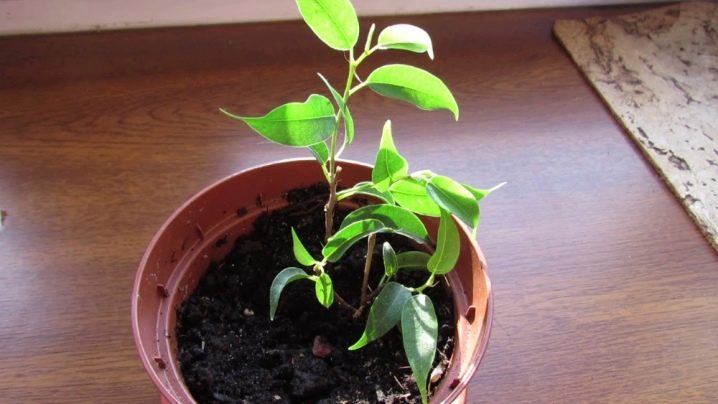
In addition to an overabundance of fertilizers, sometimes the opposite situation occurs - a lack of microelements. In this case, young leaves turn light green, and old ones have a dark color. The flower grows slowly, practically does not give new shoots. In this case, it is advised to adjust the fertilization program to increase soil fertility. Experts advise mixing the top dressing in a ratio of 2: 1: 2 or 3: 1: 2.
Potassium deficiency is manifested by marginal chlorosis and necrosis on the lower leaves. In this particular case, an additional supply of a trace element to the soil is required. Potassium chloride and nitrate are good sources. With a lack of magnesium, the lower leaves suffer. First of all, chlorosis appears in the most distant parts. To fix the problem, you must use magnesium sulfate. Another important trace element is manganese, the deficiency of which is manifested by interveinal chlorosis. Helps in solving the problem of manganese sulfate.
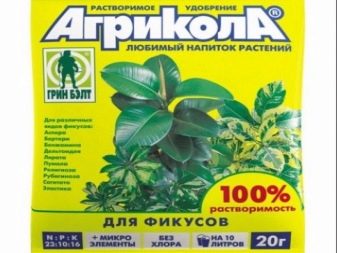

Diseases
Plant breeders often encounter bacterial infections. Among them, one of the most popular is caused by the bacteria Agrobacterium tumefaciens. The first manifestations of this disease are swollen areas on the stems, leaf veins, and even on the roots. Over time, they enlarge and crust over. In cases of severe damage, the formations increase, unite, resulting in a distorted trunk or root.
Bacterial infections cannot be eliminated, there are no effective drugs, so the only way to get rid of the problem is to remove and destroy all plants affected by bacteria, then sterilize the entire instrument.
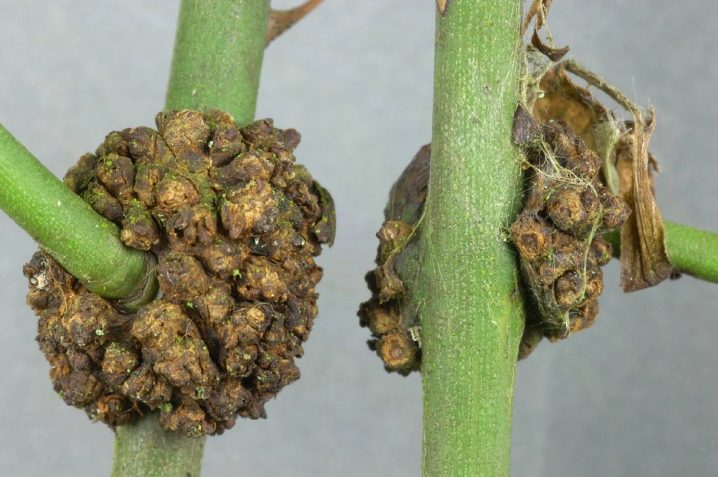
Another, no less dangerous infection is spotting. It is manifested by the appearance of water-saturated areas that can grow rapidly. Sometimes the lesions have a bright yellow border. In severe infections, the leaf abscess spreads strongly throughout the plant. Benjamin plants are most commonly affected. The disease is difficult to control, all affected areas must be removed immediately. Copper bactericides can be effective when used preventively and on a regular basis.
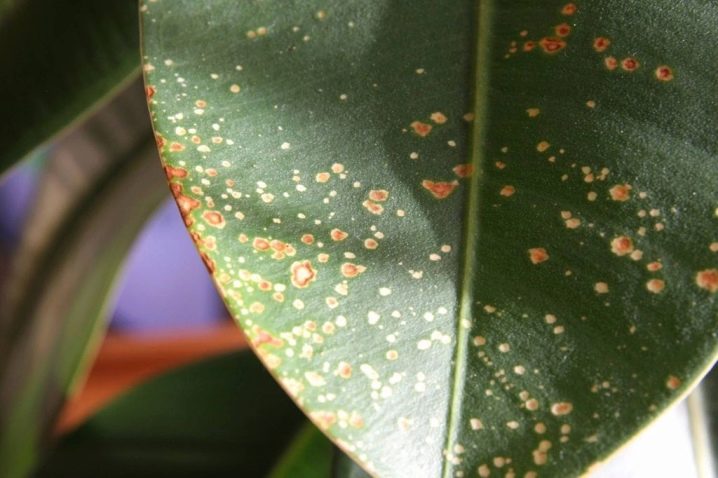
But bacterial infections are not the only ones, often ficuses also infect fungal viruses. Anthracnose is an example. The disease is characterized by yellow and brown spots on the leaves. Spores form in areas along the veins. The plant becomes infected with this ailment during the summer months. As a preventive measure, it is necessary to maintain stable conditions for keeping the flower. On rooted plants, watering and exposure to winter precipitation should be minimized.
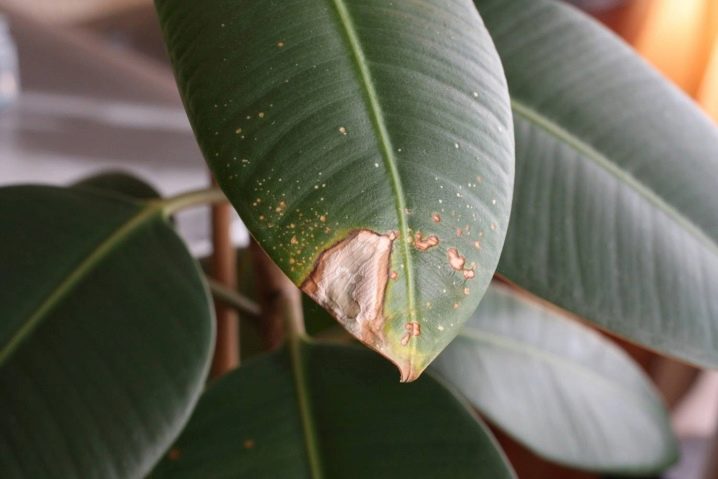
Another problem is gray mold. Large, brown spots appear on the leaves and grow rapidly. The defeat of gray rot or late blight occurs primarily on elastic ficus in the cold season, especially on cuttings.
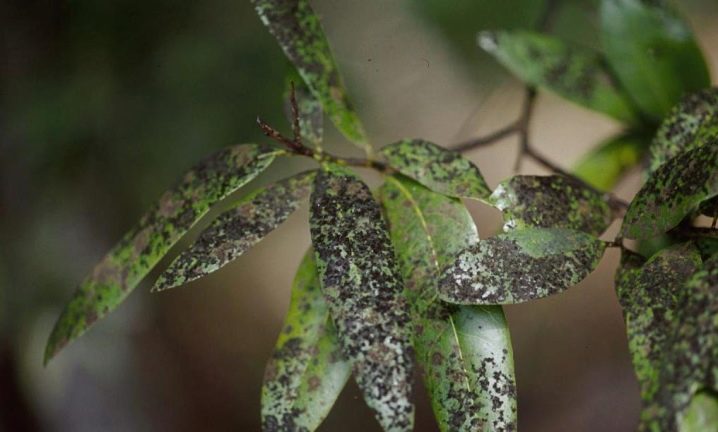
Cercosporiasis is tiny and slightly raised, red or dark green spots on the underside of foliage. They spread quickly over the entire surface. If left untreated, the entire plant can become covered with fungus. The best control is insecticides.
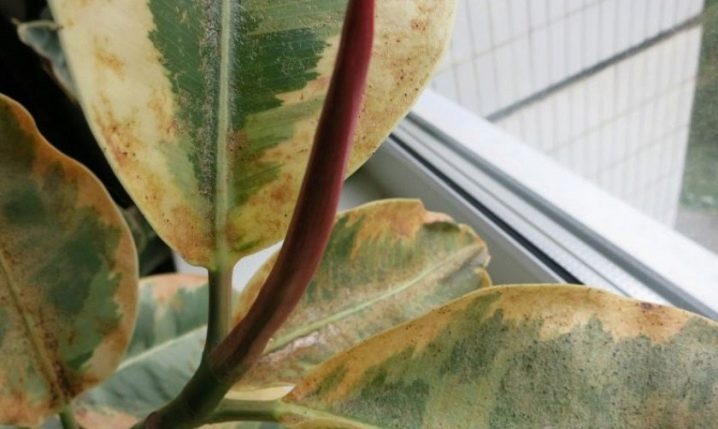
Pests
The main pests among insects: aphids, thrips, mites, fungal midges. It is they who love to attack ficus even in indoor conditions. The best means of dealing with them is pesticides, but you can simply use a contrast shower or even treat with an alcohol solution or soap.
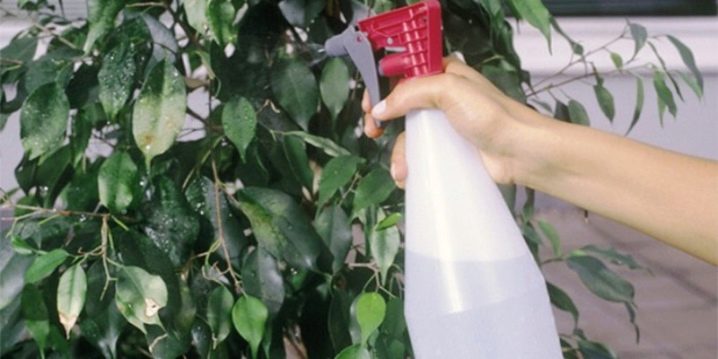
Leaf nematodes appear as leaf spots. They are usually rectangular. The infection is carried on by the movement of the nematodes from the weeds to the lower leaves, so it is important to remove any grass in the pot. When a nematode is damaged, the root system is weakened, rot often appears. The best prevention is to use sterile soil. Sometimes the root node is damaged, then there is a growth retardation and further wilting of the plant.
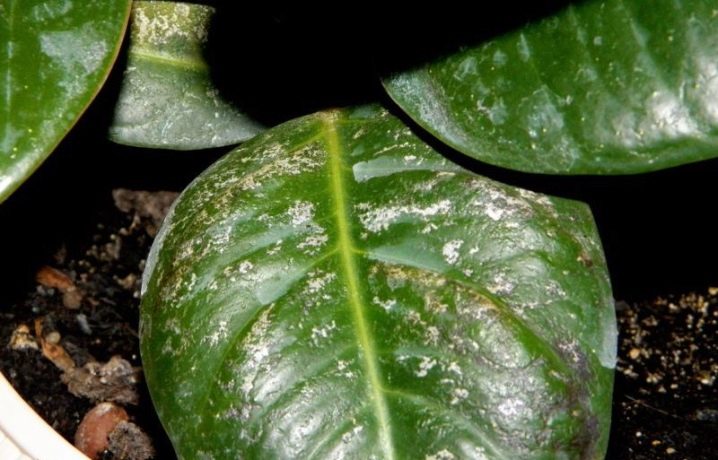
The insects appear as white, cottony masses in the axils of the leaves, on the undersides and on the roots. Honeydew and mold are also often present during infestation. The plant turns out to be undersized, if not treated, it dies.
Thrips-infested leaves become twisted or distorted, with silvery-gray scars where the insect feeds. Treatment with pesticides and fungicides gives a positive result.
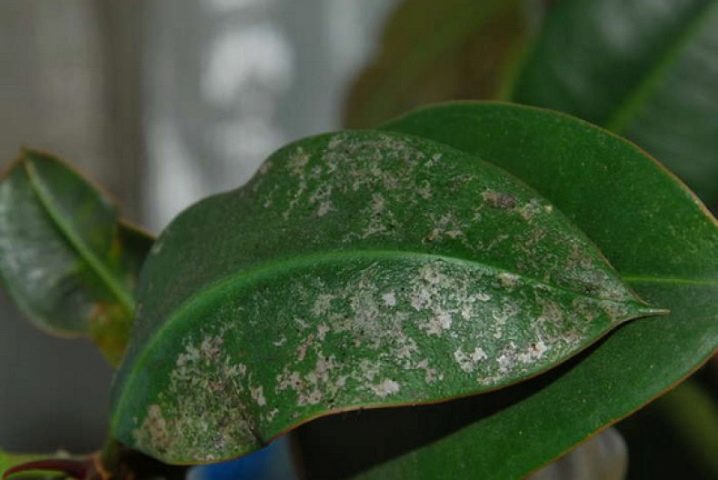
Sometimes growers notice white dots on the edges of the leaves that look like wax. They may look like a pest or a disease, but they don't really need treatment or special care. Scientists have not yet managed to understand what it is, some think that this is how the ficus gets rid of an excess of minerals.

If sap oozes from the plant, this is the result of an invasion of pests, usually mealybugs and mites, which feed on sucking the plant's nutrients. The correct treatment is of particular importance, it helps to preserve the flower. Fungicides and horticultural oils are proven techniques to combat this problem.
For information on what types of ficus are and how to care for it at home, see the next video.































The comment was sent successfully.